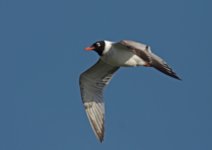Tib78
Well-known member
An interesting bird from the Black sea. I brought it from a French forum.
I think that our dedicated BF "gullers" will quickly see what the problem is...the primaries and secondaries indicates a 1st winter (1cy) but the head is similar to breeding adult, any explanation?
Picture take recently. No picture showing the upperparts so far.
Thanks in advance
I think that our dedicated BF "gullers" will quickly see what the problem is...the primaries and secondaries indicates a 1st winter (1cy) but the head is similar to breeding adult, any explanation?
Picture take recently. No picture showing the upperparts so far.
Thanks in advance




